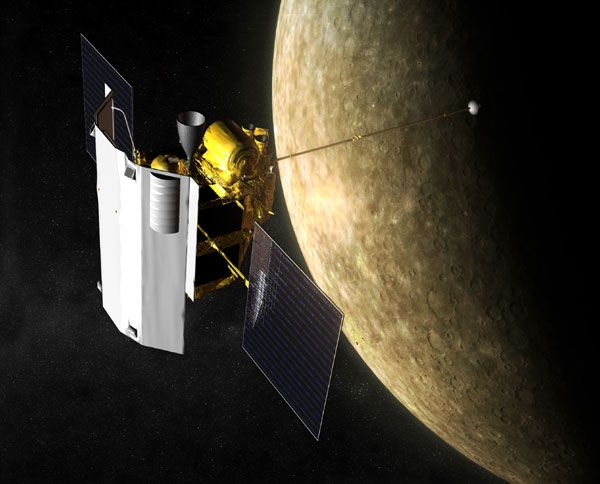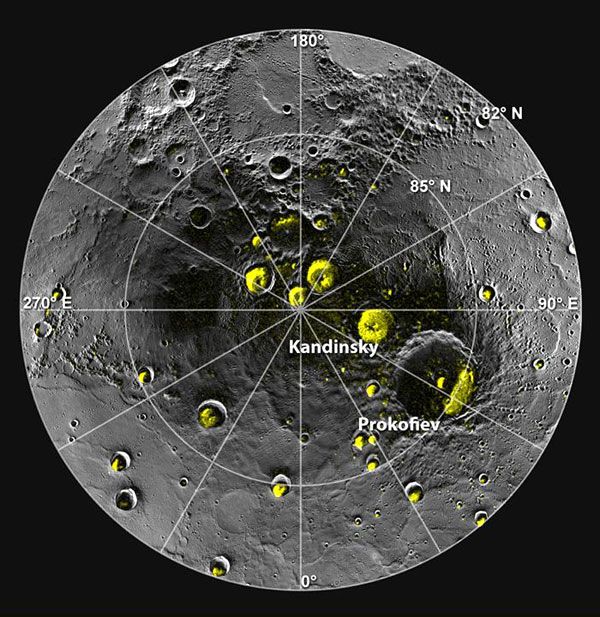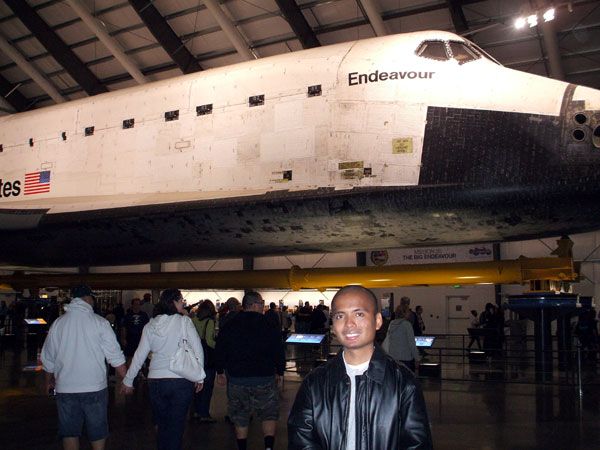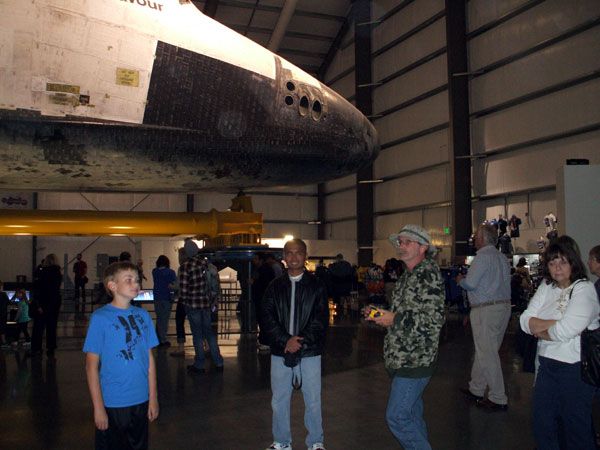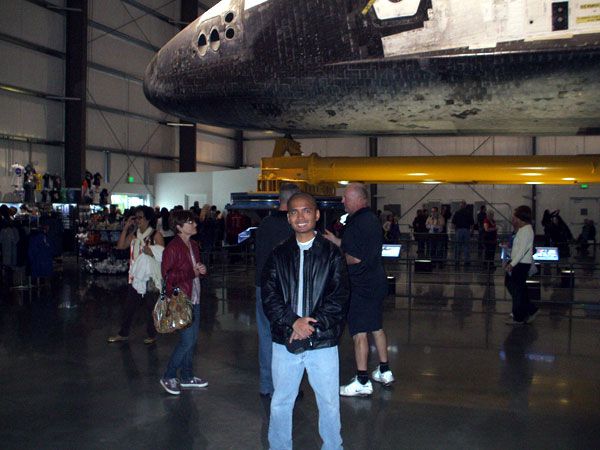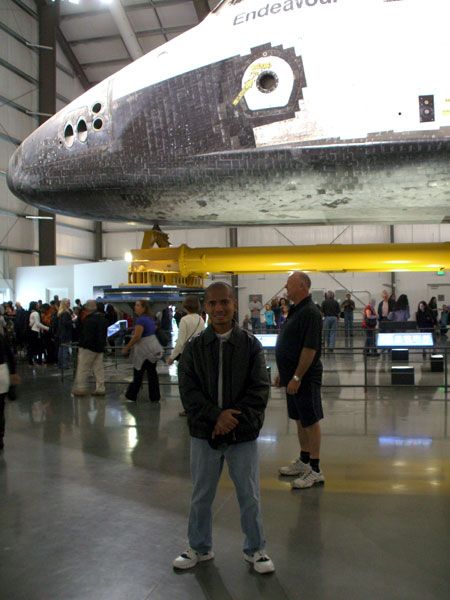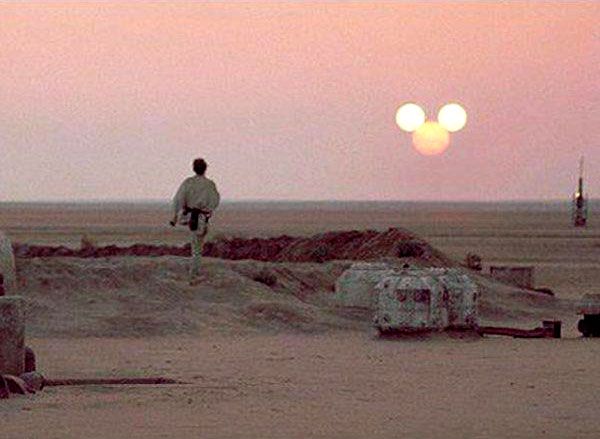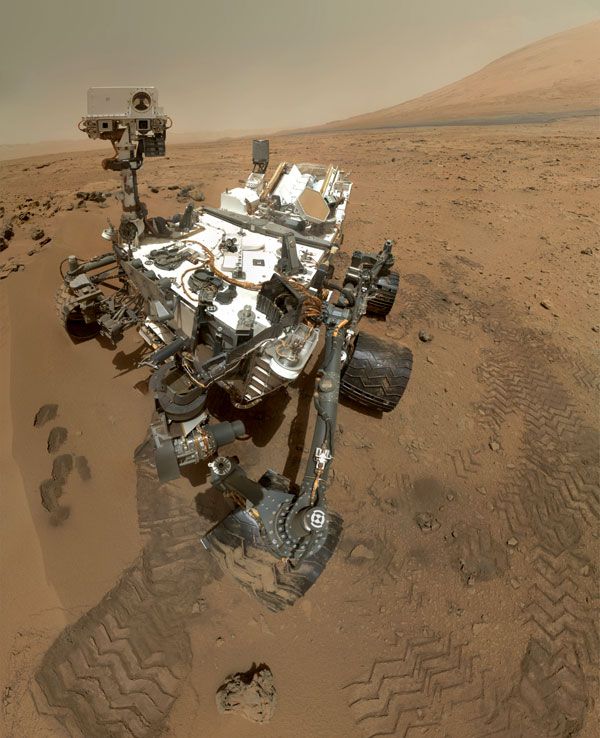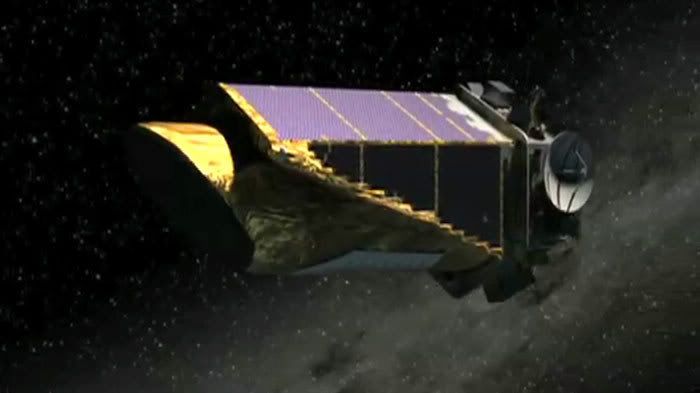 NASA
Kepler Update...
NASA
Kepler Update... With 105 exoplanetary discoveries now under its belt—with more than 2,000 yet to come, if all data currently collected by the spacecraft is confirmed by astronomers—here's hoping that
Kepler will make good use of four more years of life...
(That shouldn't be too hard.)
****
NASA's Kepler Wraps Prime Mission, Begins Extension (Press Release)
PASADENA, Calif. -- NASA is marking two milestones in the search for planets like Earth; the successful completion of the Kepler Space Telescope's three-and-a-half-year prime mission and the beginning of an extended mission that could last as long as four years.
Scientists have used Kepler data to identify more than 2,300 planet candidates and confirm more than 100 planets. Kepler is teaching us that the galaxy is teeming with planetary systems and that planets are prolific, and is giving us hints that nature makes small planets efficiently.
So far, hundreds of Earth-size planet candidates have been found, as well as candidates that orbit in the habitable zone, the region in a planetary system where liquid water might exist on the surface of a planet. None of the candidates is exactly like Earth. With the completion of its prime mission, Kepler now has collected enough data to begin finding true sun-Earth analogs -- Earth-size planets with a one-year orbit around stars similar to the sun.
"The initial discoveries of the Kepler mission indicate at least a third of the stars have planets and the number of planets in our galaxy must number in the billions," said William Borucki, Kepler principal investigator at NASA's Ames Research Center in Moffett Field, Calif. "The planets of greatest interest are other Earths, and these could already be in the data awaiting analysis. Kepler's most exciting results are yet to come."
NASA's Kepler Space Telescope searches for planet candidates orbiting distant suns, or exoplanets, by continuously measuring the brightness of more than 150,000 stars. When a planet candidate passes, or transits, in front of the star from the spacecraft's vantage point, light from the star is blocked. Different-sized planets block different amounts of starlight. The amount of starlight blocked by a planet reveals its size relative to its star.
Kepler was launched March 6, 2009. Its mission was to survey a portion of the galaxy to determine what fraction of stars might harbor potentially habitable, Earth-sized planets. Planets orbiting in or near habitable zones are of particular interest.
Kepler began the search for small worlds like our own on May 12, 2009, after two months of commissioning. Within months, five exoplanets, known as hot Jupiters because of their enormous size and orbits close to their stars, were confirmed.
Results from Kepler data continue to expand our understanding of planets and planetary systems. Highlights from the prime mission include:
--
In August 2010, scientists confirmed the discovery of the first planetary system with more than one planet transiting the same star. The Kepler-9 system opened the door to measurement of gravitational interactions between planets as observed by the variations in their transit timing. This powerful new technique enables astronomers, in many cases, to calculate the mass of planets directly from Kepler data, without the need for follow-up observations from the ground.
--
In January 2011, the Kepler team announced the discovery of the first unquestionably rocky planet outside the solar system. Kepler-10b, measuring 1.4 times the size of Earth, is the smallest confirmed planet with both a radius and mass measurement. Kepler has continued to uncover smaller and smaller planets, some almost as small as Mars, which tells us small rocky worlds may be common in the galaxy.
--
In February 2011, scientists announced Kepler had found a very crowded and compact planetary system -- a star with multiple transiting planets. Kepler-11 has six planets larger than Earth, all orbiting closer to their star than Venus orbits our sun. This and other subsequently identified compact, multi-planet systems have orbital spacing relative to their host sun and neighboring planets unlike anything envisioned prior to the mission.
--
In September 2011, Kepler data confirmed the existence of a world with a double sunset like the one famously portrayed in the film
Star Wars more than 35 years ago. The discovery of Kepler-16b turned science fiction into science fact. Since then, the discoveries of six additional worlds orbiting double stars further demonstrated planets can form and persist in the environs of a double-star system.
--
In December 2011, NASA announced Kepler's discovery of the mission's first planet in a habitable zone. Kepler-22b, about 2.4 times the size of Earth, is the smallest-radius planet yet found to orbit a sun-like star in the habitable zone. This discovery confirmed that we are getting continually closer to finding planets like our own.
--
In February 2012, the Kepler team announced more than 1,000 new transiting planet candidates for a cumulative total of 2,321. The data continue the trend toward identifying smaller planets at longer orbital periods, similar to Earth. The results include hundreds of planetary systems.
-- Recently, citizen scientists participating in Planet Hunters, a program led by Yale University, New Haven, Conn., that enlists the public to comb through Kepler data for signs of transiting planets, made their first planet discovery. The joint effort of amateur astronomers and scientists led to the first reported case of a planet orbiting a double star. The three bodies are, in turn, being orbited by a second distant pair of stars.
"Kepler's bounty of new planet discoveries, many quite different from anything found previously, will continue to astound," said Jack Lissauer, planetary scientist at Ames. "But to me, the most wonderful discovery of the mission has not been individual planets, but the systems of two, three, even six planets crowded close to their stars, and, like the planets orbiting about our sun, moving in nearly the same plane. Like people, planets interact with their neighbors and can be greatly affected by them. What are the neighborhoods of Earth-size exoplanets like? This is the question I most hope Kepler will answer in the years to come."
In April 2012, NASA awarded Kepler an extended mission through as late as 2016. More time will enable the continued search for worlds like our own -- worlds that are not too far and too close to their sun.
"The Earth isn't unique, nor the center of the universe," said Geoff Marcy, professor of astronomy at the University of California at Berkeley. "The diversity of other worlds is greater than depicted in all the science fiction novels and movies. Aristotle would be proud of us for answering some of the most profound philosophical questions about our place in the universe."
Ames manages Kepler's ground system development, mission operations and science data analysis. NASA's Jet Propulsion Laboratory in Pasadena, Calif., managed the Kepler mission development. Ball Aerospace & Technologies Corp. in Boulder, Colo., developed the Kepler flight system and supports mission operations with the Laboratory for Atmospheric and Space Physics at the University of Colorado in Boulder. The Space Telescope Science Institute in Baltimore archives, hosts and distributes Kepler science data. Kepler is NASA's 10th Discovery Mission and is funded by NASA's Science Mission Directorate at the agency's headquarters in Washington.
Source: Jet Propulsion Laboratory****
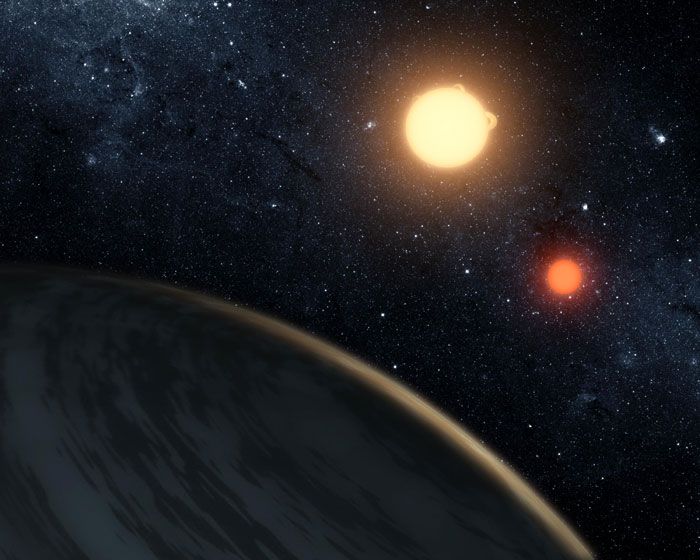 NASA / JPL - Caltech / T. Pyle
NASA / JPL - Caltech / T. Pyle




